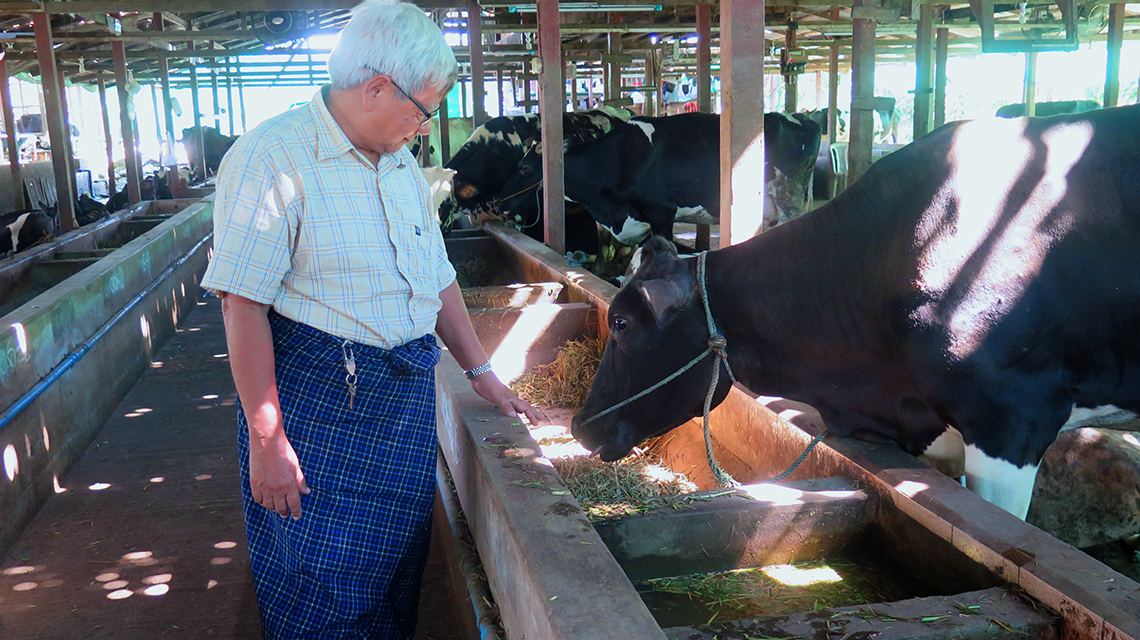The increased purchasing power of Myanmar’s population, thanks to the country’s economic boom over the last few years, has led to increased demand for animal products, including dairy. The country’s government has prioritized the support of dairy farming and would like to see the number of dairy cows increase significantly from just 500,000 today, said Ok Kar Soe, Head of the Animal Genetic Upgrading and Research Centre. The lab has benefited from equipment, training and hands-on advice from IAEA and FAO experts, he said.
“Our lab has mastered various nuclear and molecular techniques for the genetic characterization of domestic cattle and for the production of semen that will result in cows with superior characteristics,” Soe said. This is important not only for food security and supply but also for providing a livelihood to villagers like Oo and the 65 other small scale farmers Silvery Pearl buys milk from.
Historically, cattle in Myanmar were used as a source of power in agriculture for ploughing the fertile fields of the country’s river valleys. Most of the indigenous cattle are draught animals that can work long hours tilling fields and pulling carts. But they are not particularly productive when it comes to milk production. The genetics laboratory has characterized these local varieties and developed a programme to breed cows that are able to produce more milk, Soe explained. As a result of support from the IAEA and FAO, the lab’s capacity to produce frozen semen has increased more than five-fold and now provides for 32,000 artificial inseminations every year. It has also developed a gene bank with a large repository of frozen semen.
Without such modern techniques, dairy farming would not be a profitable business, said Tin Win, who established his farm in 1999 to supplement his income as a government official. Following his retirement in 2006, he has focused solely on running Silvery Pearl Dairy, which now provides the livelihood for 100 employees and another 300 people through contractual relationships with farmers like Oo. Thanks to the presence of Silvery Pearl, a mid-sized business, the village now receives reliable electricity and many of its roads have been paved. “The changes here have led to a virtuous cycle,” Win said.
The next step is to roll out the programme to regions of the country further away from the urban centres of Yangon and Mandalay with Livestock Breeding and Veterinary Department labs, Soe said. The processing of frozen semen requires liquid nitrogen, and very low temperatures, not currently possible elsewhere.
As for Oo and his children, their mind is elsewhere. “I need to think of improving my business further,” he said. “Perhaps my children will eventually be interested in taking it on.”


